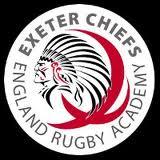Main Menu
Latest Blog Entry
User login
Monitoring and Assessment of Strength and Power in High Performance Athletes- Mike McGuigan lecture review UKSCA conference
Mike McGuigan works for the New Zealand Academy of Sport and has moved from sports science to coaching. He reviewed how he collects data, but more importantly how he can use it to help the coaches and athletes within the sports.
Using an isometric mid-thigh pull test
Here the bar is placed under a fixed pole and the athlete stands on a force platform. The 3 second isometric pull produces a high reliability for peak force measurement, but not for rate of force development. This test is easy to administer for large groups of athletes and saves time instead of loading up barbells for cleans.
McGuigan uses the data and publishes it on a spider chart using the z-score which is (athlete’s score-team average/ team standard deviation). The disadvantage of this system is that if the good players aren’t testing it screws the average up, player’s z scores can go up even if their actual performance declined.
Now you have modified z-scores and you can plot these against benchmarks. You can manipulate the scale for lower level athletes to allow progress.
The Eccentric Utilisation Ratio (EUR) of CMJ to SJ performance
The Counter Movement Jump (CMJ) is 10-15% more than the squat jump (a static jump which eliminates the Stretch Shortening Cycle) and this gives a useful indicator of athlete power. (I use both in the Jump Higher programme)
McGuigan then highlighted the need to develop measures that allow decision making on training emphasis- to fine tune the process for each athlete.
Measuring load management and fatigue monitoring gives a power profile for each athlete, plus some hormonal and perceptual measures. A measure of monotony was (average load/ standard deviation of load sessions). As you know, monotony of training is a key factor of overtraining.
How to measure effort: the Global RPE
The Global RPE is taken 30 minutes after the session, it allows the athlete to reflect on the whole session, rather than what happened in the last 10 minutes.
In practical terms, 10-15 minutes of recovery is enough, it is tricky getting the athletes to stay longer, and waiting for them to get home leads to adherence issues.
If you multiply RPE by the duration of the session over the course of the week, this gives a good indicator of training load. Then each session can be compared to the SD over all the sessions. Montotony and strain are good indicators of actual work done and how it relates to the athlete.
Summary
Quite a lot of information in this lecture, but it was the first one of the day, so I was fresh. McGuigan was good in relating his transition from researcher to practitioner, and finding useful tools that actually help the coaches.
More on testing here
Client Testimonials
 Exeter Chiefs Rugby Academy
Exeter Chiefs Rugby Academy
James was in sole charge of fitness related matters, organising and implementing training programmes... also provided players with mentoring and advice on nutritional needs. He varied the programmes and was keen to keep ideas fresh and designed activities suitable to help young rugby player's progress. James was keen to put time into the thought process of his ideas and carry out to a very high standard.
More

